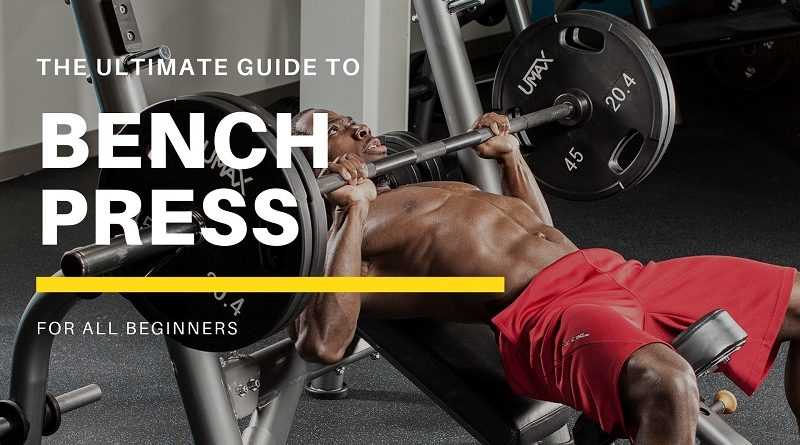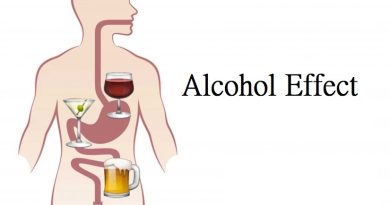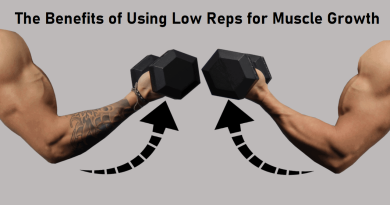Barbell Bench Press
Barbell Bench Press is one of the most popular upper body exercises for muscle growth and strength increase. When it is done correctly, it improves all your performance and provides you great benefits. In addition to actively working the barbell bench press, triceps, front shoulders and forearms, Bench press indirectly works your neck, all your back muscles that support your body and your hips that act as bridges.
| Name | Barbell Bench Press |
| Exercise Type | Strength |
| Skill Level | Beginner |
| Equipment Needed | Dumbbell |
| Muscles Worked | Primary: Chest; Secondary: Anterior deltoid, Biceps, Triceps |
| Mechanics | Compound |
| Force | Push (bilateral) |
| Alternative Forms/Substitute | Chest press , dumbbell press |
Barbell Bench Press
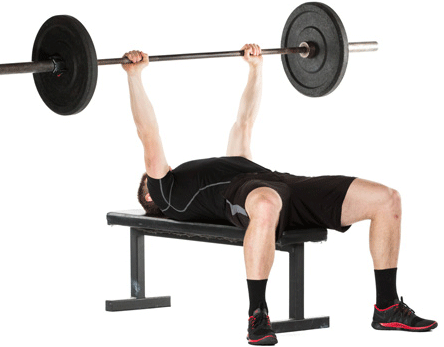
How to Barbell Bench Press?
- Lie on your back on a flat coffee table.
- Open your arms in medium width, a little more than Shoulder Width.
- When you grasp the weight, let the palms face up.
- The barbell should be at the angle to come to the middle of the chest.
- Do not touch your chest while lowering the weight.
- Inhale, lift the weight so that the arms are upright.
- Wait for 1 second and exhale slowly down, while breathing out.
- Apply up to the number of repetitive sets.
Barbell Bench Press Tip
Unfortunately, some people do not lower the bar to the chest level when doing bench press. However, it cancels the most efficient part of this movement and greatly reduces the efficiency you will get from exercise.
Keep the bar on your wrist and your elbows. When both lowering and raising the bar, be sure to move along a straight line. To do this, first put your thumb on the bar and grasp your thumb with your palm.
It is possible to get the support you get from your feet by standing flat on the ground or standing on your toes. Take a position according to your style.
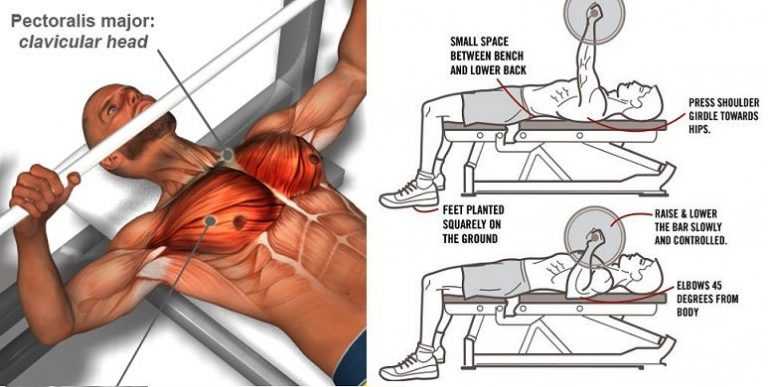
Barbell Bench Press Grip Angle
In this research on powerlifting athletes, professional athletes are asked to apply both straight and incline and decline bench press in medium, narrow grips, which are the wide-grip flat bench press and other options they apply in the competition. (1)
The information obtained in the research is as follows:
- There is no change in EMG, which is the value of muscle activation in wide and normal grips. In narrow grip, biceps work much less.
- While doing the Incline bench press, the triceps are less active while the biceps are more active.
- The movement that actively uses the back is seen as the decline bench press.
What Muscles Work in Bench Press?
- Pectoralis major (chest)
- Up Pectoralis major (upper chest)
- Anterior Deltoid (shoulder muscles)
- Pectoralis minor (small chest muscle)
- Triceps (back arm)
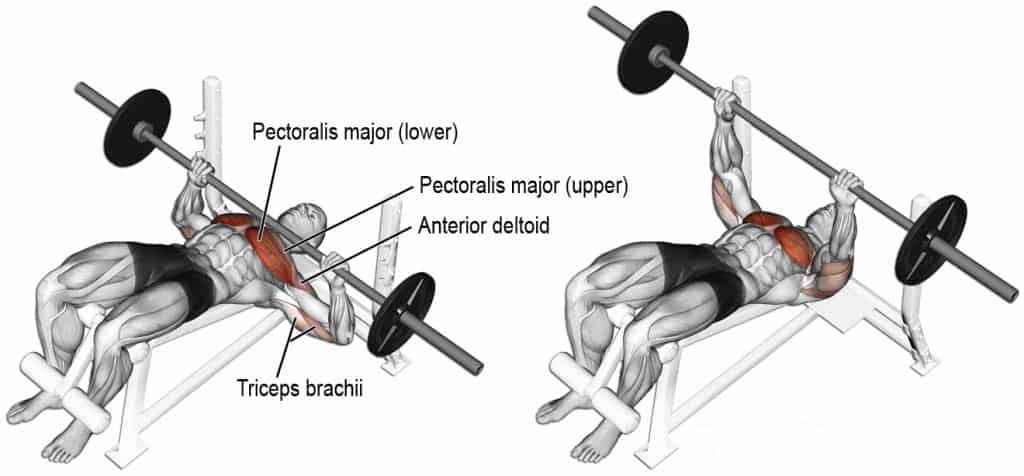
What are the Benefits of Bench Press?
- Bench press is one of the most basic chest movements that provide muscle growth and strength.
- It is an excellent exercise for muscle hypertrophy. Performing a bench press increases your push force.
- For the development of the pectoral muscles, the Pectoralis major muscle group should work with chest exercises. You can develop your chest muscles by doing bench press from breast enhancement movements.
- It acts on the Subclavius muscle, which is at the level of the upper chest and the shoulder line, below the collarbone, thereby strengthening and reduces the risk of injury.
- Back Arm Muscles (Triceps): Bench Press, which enables the inner and lower part of the back arm muscle to work in the secondary group, is also among the effective movements for the back arm muscles, if done correctly.
- It is one of the most important upper body exercises that provide natural testosterone boost. Therefore, it is common to all bodybuilding programs. It is as effective as leg exercises in testosterone increase.
- Most importantly it makes you look sexier.
How Much Weight Should I Lift?
Bench press It is one of the most important exercises to increase strength and mass in chest muscles, front shoulders and triceps. However, increasing your strength or muscle mass determines how your form and technique will be applied in this very important movement.
Research shows that lifting 75-85% of the weight you can lift is useful for fat burning and bodybuilding.
- For fat burning and muscle development, remove 75-85% of the maximum weight you can lift and re-apply 8-12.
- For Strength Training use 85-100% of maximum weight with 1-5 reps. Practice your workout by resting for 3-5 minutes. Ex. In the program with 5-3-1 sets number, lift 85% weight in the 5th repetition, 90% in 3 repetitions and 100% weight in the last repetition.
- Repeat when applying 12-20 for muscle strength and stability. Prefer max 50-70% weight and apply 90 seconds rest time. Ex. Apply 20 repetitions at 50% weight, and apply 12 repeats at 70% weight. The less weight, the more repetition, The more weight, the less repetition.
Progressive Overload, which means progressive loading, try to increase the weight a little more each time we go to training. Routine exercises with the same weight may not be beneficial in terms of development after a while. Always try to raise the bar by gradually increasing the weights.
Chest Muscles Anatomy
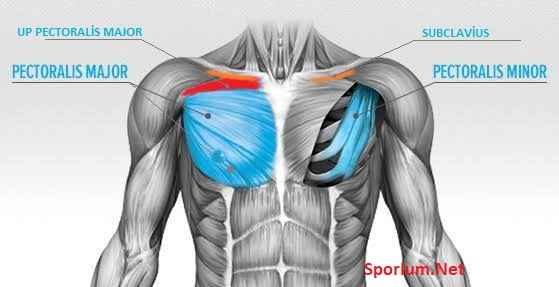
Pectoralis Major: (Large Chest Muscle) The muscle that covers most of the anterior wall of the chest.
Pectoralis Minor: (Small Chest Muscle) It is a triangular muscle that rests above the bone structure under the large chest muscle.
Subclavius: (Collarbone Muscle) It is a small muscle between the first rib and the clavicle. It is used to protect the armpit, vascular and neural network.
